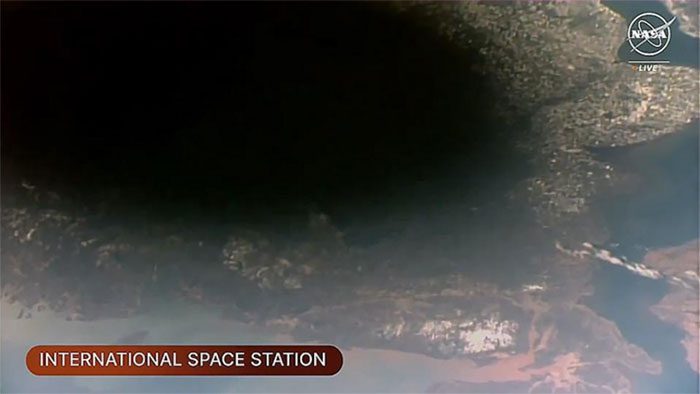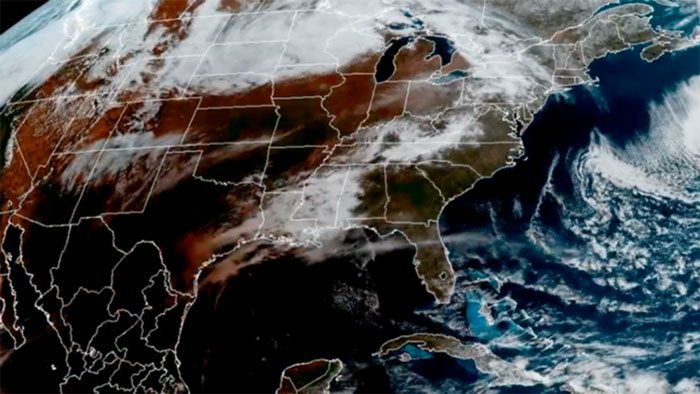Numerous images of solar eclipses captured from the ground exist, but the truly unique ones come from NASA astronauts aboard the International Space Station (ISS).
During a total solar eclipse, the Moon obscures the Sun, leaving only the radiant solar corona visible. However, for astronauts on the ISS, the view is spectacular: the enormous shadow of the Moon moving gradually across the surface of North America.

The enormous shadow cast by the Moon on Earth during a total solar eclipse. (Photo: NASA).
At the time of the eclipse, astronauts aboard the ISS, located 418 km above the Earth’s surface, were perfectly positioned to capture this image. Additionally, the U.S. environmental and weather satellite GOES recorded the moment when the umbra (the darkest part of the Moon’s shadow) appeared on Earth.

The shadow cast by the Moon captured by the satellite. (Photo: NOAA).
The images of the eclipse from the ISS were not coincidental. NASA adjusted its altitude in orbit for several months, calculating so that the space station could observe this eclipse and the next one in North America, which will occur in 20 years. As a result, they captured historic images of the Moon’s shadow moving from New York to Newfoundland from an altitude of 418 km above southeastern Canada. The images were taken through the dome of the ISS by NASA aerospace engineers Matthew Dominick and Jeanette Epps.
Although the ISS passed over North America during the total solar eclipse, it was only visible as a bright white dot moving quickly across the sky, due to the reflection from the solar panels installed on the station.
In addition to helping those wanting to view the eclipse find a cloud-free spot along its path, the GOES-East (CONUS) satellite also captured fascinating images of the Moon’s shadow. This satellite is positioned at an altitude of over 35,000 km above the Earth’s equator and moves at the same speed as the planet’s rotation, allowing it to “anchor” in the same position above the Earth’s surface. Thus, it is referred to as a geostationary satellite.
The satellites also observed a decrease in surface temperature on Earth within the Moon’s umbra during the eclipse, due to the reduced sunlight reaching the ground.
The recent total solar eclipse was the longest in North America in over 200 years, lasting for 4 minutes and 26 seconds, just shy of the 4 minutes and 48 seconds recorded in 1806.
The next total solar eclipse in North America will occur on March 30, 2033, in Alaska. The following total solar eclipse in the continental United States (excluding Alaska) will take place on August 23, 2044, over Montana and South Dakota. Just one lunar year later, on August 12, 2045, a total solar eclipse will traverse 12 states across the United States, from California to Florida.


















































